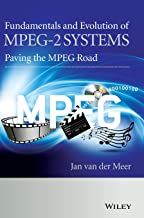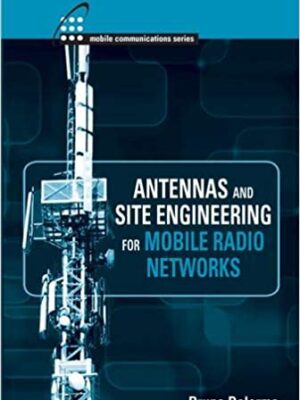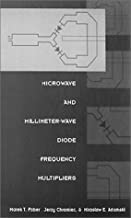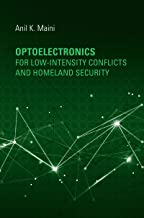Fundamentals & Evolution of MPEG-2 SYSTEMS: Paving the MPEG Road
Original price was: ₹8,434.10.₹6,747.28Current price is: ₹6,747.28.
ISBN: 9780470974339
Author/Editor: Jan Van Der Meer
Publisher: John Wiley
Year: 2014
1 in stock (can be backordered)
Description
Written by an expert in the field, this book examines the MPEG-2 system specification as developed in the early 1990?, as well as its evolution into the fourth edition of the MPEG-2 systems standard, published in 2013. While MPEG-2 systems will continue to evolve further, this book describes the MPEG-2 system functionality as of October 2013. Furthermore, relevant background information is provided. The discussion of MPEG-2 system functionality requires knowledge of various fundamental issues, such as timing, and supported content formats. Therefore also some basic information on video and audio coding is provided, including their evolution. Also other content formats supported in MPEG-2 systems are described, as far as needed to understand MPEG-2 systems.
Ordered logically working from the basics and background through to the details and fundamentals of MPEG-2 transport streams and program streams
Explores important issues within the standardization process itself
Puts the developments on MPEG-2 systems into historic perspective
Includes support of 3D Video and transport of AVC, SVC and MVC
Concludes with additional issues such as real-time interface, delivery over IP networks and usage by application standardization bodies
Predicts a continuing promising future for MPEG-2 transport streams
Additional information
| Weight | 0.974 kg |
|---|
Product Properties
| Year of Publication | 2014 |
|---|---|
| Table of Contents | Foreword xi Preface xiii About the Author xvii Acknowledgements xxi Part One BACKGROUNDS OF MPEG-2 SYSTEMS 1 1 Introduction 3 1.1 The Scope of This Book 7 1.2 Some Definitions 7 References 8 2 Technology Developments Around 1990 9 References 11 3 Developments in Audio and Video Coding in MPEG 13 3.1 The Need for Compression 13 3.1.1 Compression Factors for Audio 14 3.1.2 Compression Factors for Video 14 3.2 MPEG Video 19 3.2.1 Introduction 19 3.2.2 MPEG-1 and MPEG-2 Video Essentials 20 3.2.3 Evolution of MPEG Video 39 3.3 MPEG Audio 47 3.3.1 MPEG-1 and MPEG-2 Audio Essentials 47 3.3.2 Evolution of MPEG Audio 53 References 59 4 Other Important Content Formats 61 4.1 Metadata 61 4.2 Timed Text 64 4.3 Lossless and Scalable Lossless Audio 69 4.4 Multiview Video 69 4.5 3D Video 70 4.5.1 Left and Right Views in a Single Video Stream 73 4.5.2 Depth Information Associated to 2D Video 75 4.5.3 Use of MVC to Convey Left and Right Views 78 4.5.4 Further 3D Video Evolution 79 References 80 5 Motivation for a Systems Standard 83 6 Principles Underlying the MPEG-2 Systems Design 87 6.1 Building an End-to-End System 87 6.1.1 Constant End-to-End Delay 87 6.1.2 Video Coding Delay 88 6.1.3 Audio Coding Delay 94 6.1.4 Delay Compensation 95 6.2 The Multiplex and Demultiplex Operation 97 6.3 Delivery Schedule of MPEG System Streams 106 6.4 Synchronization of Audio and Video 108 6.5 MPEG-2 System Streams and the STD Model 113 6.6 Timing Issues 118 6.6.1 Frequency and Tolerance of the STC in MPEG-1 Systems 119 6.6.2 Regeneration of the STC in System Decoders 121 6.6.3 Frequency and Tolerance of the STC in MPEG-2 Systems 125 6.7 Quality of Service Issues 127 6.8 Transport Layer Independence 131 References 132 7 MPEG-1 Systems: Laying the MPEG-2 Foundation 133 7.1 Driving Forces 133 7.2 Objectives and Requirements 136 7.3 Structure of MPEG-1 System Streams 138 7.4 The MPEG-1 System Target Decoder 143 7.5 The MPEG-1 System Stream 155 7.5.1 Data Structure and Design Considerations 155 7.5.2 Constrained System Parameter Streams 161 7.5.3 Compliancy Requirements of MPEG-1 System Streams 166 7.6 MPEG-1 Applications 168 7.6.1 Compact Disc 168 7.6.2 Computers 169 7.7 Conclusions on MPEG-1 169 References 170 Part Two THE MPEG-2 SYSTEMS STANDARD 171 8 The Development of MPEG-2 Systems 173 8.1 Driving Forces 173 8.2 Objectives and Requirements 176 8.3 The Evolution of MPEG-2 Systems 178 References 185 9 Layering in MPEG-2 Systems 187 9.1 Need for Program Streams and Transport Streams 187 9.2 PES Packets as a Common Layer 188 9.3 Program Streams 189 9.4 Transport Streams 193 9.4.1 Transport Packets 193 9.4.2 Conveying PES Packets in Transport Packets 195 9.4.3 The Size of Transport Packets 196 9.4.4 Multiple Programs, PSI, Descriptors and Sections 199 9.4.5 Conveying Sections in Transport Packets 213 References 214 10 Conditional Access and Scrambling 217 10.1 Support of Conditional Access Systems 217 10.2 Scrambling in Transport Streams 219 10.3 Improving the Interoperability between CA Systems 224 10.4 Scrambling in Program Streams 225 Reference 226 11 Other Features of MPEG-2 Systems 227 11.1 Error Resiliency 227 11.2 Re-Multiplexing of Transport Streams 230 11.3 Local Program Insertion in Transport Streams 234 11.3.1 Usage of Local Program Insertions 234 11.3.2 Associated PSI Issues 235 11.3.3 Time Base Discontinuities 236 11.4 Splicing in Transport Streams 239 11.5 Variable Bitrate and Statistical Multiplexing 245 11.6 Padding and Stuffing 245 11.7 Random Access and Parsing Convenience 248 11.8 Carriage of Private Data 250 11.9 Copyright and Copy Control Support 254 11.10 Playback Trick Modes 255 11.11 Single Program and Partial Transport Streams 255 11.12 Program Stream Carriage within a Transport Stream 258 11.13 PES Streams 260 11.14 Room for Future Extensions 260 References 261 12 The MPEG-2 System Target Decoder Model 263 12.1 Introduction to the MPEG-2 STD 263 12.2 The Program Stream STD: P-STD 264 12.2.1 Description of P-STD 264 12.2.2 Buffer Management in the P-STD 267 12.2.3 CSPS: Constrained System Parameter Program Stream 268 12.2.4 Usage of P-STD for PES-STD 270 12.3 Transport Stream STD: T-STD 275 12.3.1 Description of T-STD 275 12.3.2 The Use of Transport Buffers 279 12.3.3 System Data Processing and Buffer Management 281 12.3.4 Processing of Elementary Stream Data 284 12.3.5 T-STD Buffers for Elementary Stream Decoding 288 12.3.6 Buffer Management for Elementary Stream Data 290 12.4 General STD Constraints and Requirements 290 12.5 Content Format Specific STD Issues 292 12.5.1 Decoding of MPEG Audio Streams in STD Model 292 12.5.2 Decoding of MPEG Video Streams in STD Model 295 13 Data Structure and Design Considerations 299 13.1 System Time Clock Samples and Time Stamps 299 13.2 PES Packets 301 13.3 Descriptors of Programs and Program Elements 309 13.3.1 General Format of Descriptors 309 13.3.2 Types of Descriptors 311 13.3.3 System Orientated Descriptors 311 13.3.4 General Content Descriptors 315 13.4 Program Streams 319 13.5 Sections 326 13.6 Transport Streams and Transport Packets 329 Reference 331 14 Content Support in MPEG-2 Systems 333 14.1 Introduction 333 14.2 MPEG-1 334 14.2.1 MPEG-1 Video 334 14.2.2 MPEG-1 Audio 334 14.2.3 MPEG-1 System Stream 334 14.3 MPEG-2 336 14.3.1 MPEG-2 Video 336 14.3.2 MPEG-2 (BC) Audio 338 14.3.3 MPEG-2 AAC 340 14.3.4 MPEG-2 DSM-CC 341 14.3.5 MPEG-2 System Stream 342 14.3.6 MPEG-2 IPMP 343 14.4 (ITU-T Rec.) H.222.1 343 14.5 MHEG 344 14.6 MPEG-4 345 14.6.1 MPEG-4 Visual 345 14.6.2 MPEG-4 Audio 346 14.6.3 MPEG-4 Timed Text 349 14.6.4 MPEG-4 Systems 350 14.7 AVC 354 14.8 SVC 360 14.9 3D Video 366 14.9.1 Service Compatible and Frame Compatible 3D Video 366 14.9.2 Depth or Parallax Map as Auxiliary Video Stream 369 14.9.3 MVC 370 14.10 JPEG 2000 Video 376 14.11 Metadata 377 14.12 Overview of Assigned Stream-type Values 387 References 389 15 The Real-Time Interface for Transport Streams 391 Reference 396 16 Relationship to Download and Streaming Over IP 397 16.1 IP Networks and MPEG-2 Systems 397 16.2 Streaming Over IP 397 16.3 Download 400 16.4 Carriage of MPEG-2 Systems Across IP Networks 400 16.5 Adaptive HTTP Streaming 401 References 401 17 MPEG-2 System Applications 403 18 The Future of MPEG-2 Systems 407 Reference 412 Epilogue 413 Annexes 423 Index 427 |
| Author | Jan Van Der Meer |
| ISBN/ISSN | 9780470974339 |
| Binding | Hardback |
| Edition | 1 |
| Publisher | John Wiley |
You must be logged in to post a review.






Reviews
There are no reviews yet.